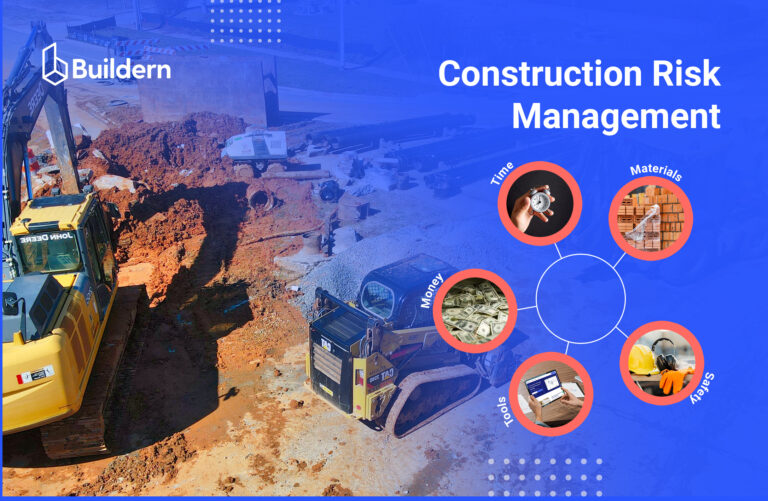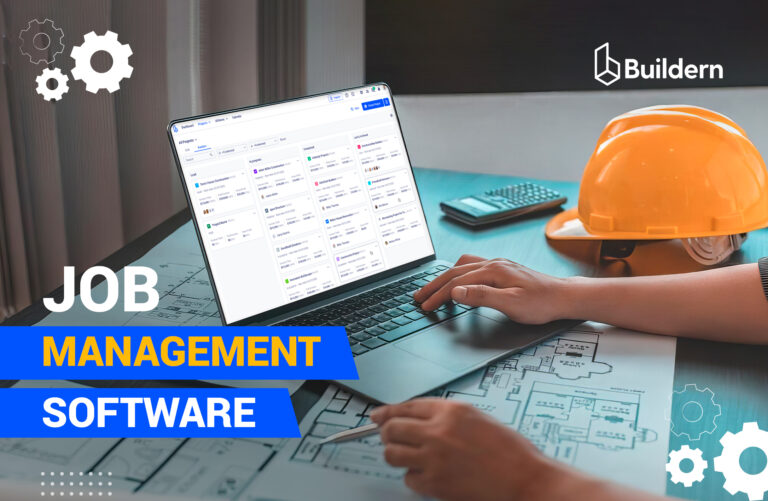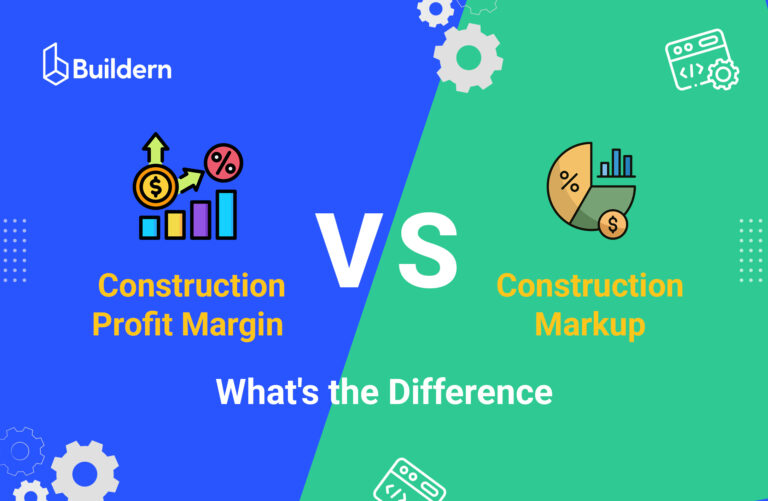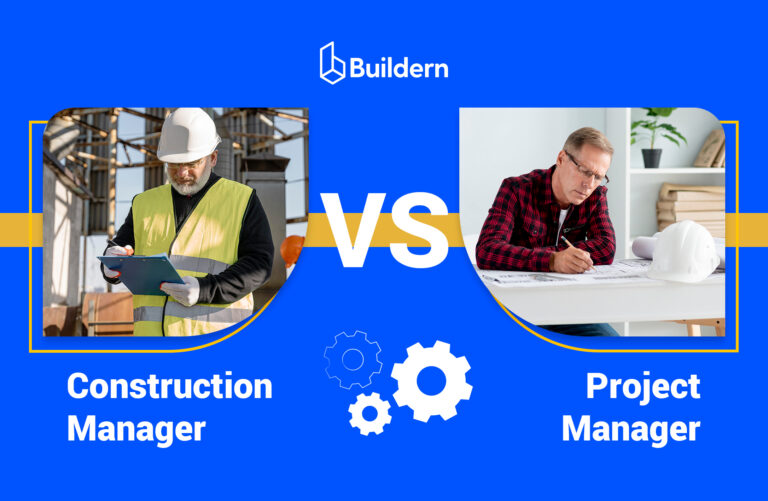Construction Risk Management: Overview, Types, and Tips to Succeed

Construction risk management is a pivotal component in an industry where change happens fast and failure rates remain high. The construction industry is estimated to have one of the highest rates of failure.
But how do companies minimize the risk of such failures and ensure that everything goes as smoothly as expected?
The answer lies in proper risk management, assisting companies in avoiding the probability of rework and ensuring the successful completion of the project. Delivering a successful project requires careful attention to detail. Thus, even the tiniest oversight during various construction stages can cascade into major project hurdles.
In this article, we will explore what construction risk management is and offer you essential tips for effective construction management. By following these guidelines, you will navigate the complexities of construction with confidence, ensuring your projects stay on course toward accomplishment.
Table of Contents
- What is Risk Management in Construction
- Why is Risk Management Important in Construction
- Types of Risks in Construction Projects
- Construction Risk Management Process
- Effective Tips to Succeed in Construction Risk Management
- Conclusion

What is Construction Risk Management
Construction risk management refers to the process of recognizing potential risks, assessing their impact, and carrying out procedures to minimize their financial effect on businesses. Incorporating risk management strategies helps construction companies to maximize their profits while mitigating the risk of loss.
Risk management requires meticulous planning to create a plan that enables project managers to identify, evaluate, and alleviate the potential risks that may arise. These include specifying what project risks may occur, as well as the risk response for resolving them. In this respect, understanding data and knowing how to work with it is an essential skill for construction risk management. Having the ability to assemble data and analyze it on past performances will allow companies to predict potential risks and minimize them, ultimately leading to maximized business performance.
Why is Risk Management Important in Construction
Risk management is pivotal in construction projects since it serves as a strategic procedure for identifying, assessing, and mitigating threats likely to affect the project’s progress. In the complex construction environment where there are various types of risks jeopardizing the flow of the project, identifying effective risk management strategies will help you protect your employees’ safety and prevent financial losses and budget overruns. It will also allow you to identify troubled initiatives early on, establish practices for identifying and responding to risks, and increase the likelihood of project success.
By taking the necessary precautions during the preconstruction stage of the project, companies can better manage their resources and fulfill regulatory requirements. This systematic approach will allow you to avoid construction site accidents while also contributing to the smooth operation of the construction processes.
Types of Risks in Construction Projects
In construction, risk is anything likely to affect the project’s cost or progress, quality negatively. The industry is diverse, and there may be various sources of risks on the construction site. Yet, recognizing what risks there are will help you come up with a precise risk management plan.
Safety Risk
The workforce is the most important asset in any construction project since nothing can be done without them. Unfortunately, the construction field is one of the least safe workplaces to be in. While you may have skilled employees, that does not guarantee them from safety hazards. So, taking care of construction safety should be your company’s utmost priority. Recognizing what safety risks there are, you will be able to take the necessary precautions and ensure the safety of your crew.
Financial Risk
Financial resources are the backbone of any project. Without adequate financial support, construction projects are destined to fail. Even if you have planned every financial aspect before the start of the project, there are chances that you’ll still encounter some unexpected costs or waste of the existing material during the implementation stage. That is why anything that may negatively affect the financial standing of the project needs to be identified beforehand. The more you know about these risks, the more likely you are to stay within your budget.
Legal Risk
Construction projects also involve legal restrictions that may negatively affect the project and hinder its inherent flow. This includes regulations, code violations, or contract term disputes that will push your project off balance. When designing your contract, take your time, understand what you expect from your employee throughout the project, and clearly state it all in the subcontractor’s agreement statement. Here are a couple of things to include in the document:
- Scope of their work
- Compensation for the harm or loss
- Dispute resolution procedures
- Terms of the payment
- Termination terms
Project Risk
These are the risks associated with project management, such as the lack of poor management of resources, experiencing project delays, or lagging behind the schedule. It is the construction project manager’s responsibility to manage everything properly and ensure everything goes as expected. That is why you should create a proper construction project management strategy and equip yourself with all the tools needed to oversee the project as efficiently as possible.
Environmental Risk
Environmental risks, also known as “Acts of God”, refer to the natural disasters that may arise unexpectedly. Unfortunately, these are the kinds of risks you cannot predict. You never know when there will be an earthquake, fire, or flood; the environmental hazards are mostly out of your control.
It may be a wise option to conduct a site analysis, ensuring the avoidance of building in areas vulnerable to natural disasters such as earthquakes. This way, you can pre-plan your actions if you encounter an environmental risk during your project. The best solution is to get appropriate insurance that will cover your loss in case of a natural disaster.
Construction Risk Management Process
Of course, you never know what surprises life might bring to you, so you can’t tell the risks your company might face during the construction project. To help you make better decisions and mitigate those risks, let’s explore the typical construction risk management process that most companies incorporate in their work.
Identify the Risk
Specify the risks that can occur during the project. Here’s where your risk checklist will be of use. But even with it, make sure you carefully review all of the documents, specifications, and plans. Fully understanding the project’s scope is mandatory to avoid risks from your side. If you’ve already worked on similar projects, rely on that experience to identify the issues that can come up during the work.
Assess the Impact
Not all risks are equal, therefore, they may have different magnitudes of impact on the given construction project. After identifying all the possible risks that may arise throughout the project, determine the frequency, probability, and severity of these potential risks. When trying to assess the most probable risks, bear the following questions in mind:
- What is the likelihood of that risk occurring?
- What is the worst thing that can happen, in case it is impossible to prevent that risk?
- How much will you lose if it happens?
Once you have identified the most probable risks, start prioritizing them. For that, figure out the impact of each risk on your list and consider its probability. This way, you can divide your list into high-impact/low-impact and high-probability/low-probability sections. The risks having both high impact and high probability should be taken care of first.
Plan the Risk Mitigation
After identifying and prioritizing your risks, you should start planning the solutions. The first thing to do is to decide if you can reduce, eliminate, avoid, or accept each risk. This step may differ depending on the type of risk. There are certain types of risks deemed acceptable, while in other scenarios, companies may need to change the scope of the work to meet the needs of the project. After planning the solution, you will need to plan how you will resolve the risk accordingly.
Implement Strategies
While you may want to, there may be unexpected issues or losses you can’t control that are coming your way. When such issues or losses occur, the construction company should take the necessary precautions to recover damages. This may include but is not limited to filling an insurance or payment bond claim, declaring bankruptcy, or filing a lawsuit. In the risk management program, the company needs to have policies and protocols for loss prevention and recovery, if required.
Review and Track
Construction risk management is a process that requires constant improvements. Conducting periodic reviews will allow you to analyze failures and successes and make the necessary adjustments by incorporating the lessons learned. It may be wise to engage other stakeholders and motivate the team to respond to risk. In this way, you will increase the likelihood of encountering the same risk.
Effective Tips to Succeed in Construction Risk Management
Let’s explore a few practical tips that will help you succeed in managing your risks.
Optimize the Communication Flow Within the Team
People working in the construction industry are usually famous for their strong work ethics and outstanding technical skills. But because of this, most of the time, construction workers overlook the importance of soft skills. The reality is that clear communication is probably one of the most vital aspects of the work, especially if you want to mitigate construction risks.
Try to establish a strong communication chain. There might be hundreds of workers in large construction projects, and your project manager simply cannot communicate with each of them individually. That’s why you need to set a strong communication chain, defining who should report to whom. Once the communication chain is set, make sure you have all the tools needed to maintain healthy communication on all levels. If everything is planned correctly, if your team is in a dangerous construction field situation or encounters a work accident, they will quickly solve the issue.
Always Have a Plan B
One of the most crucial aspects of construction risk management is always having a Plan B. You should be ready for all kinds of situations that might come up during the project. That’s why we suggest always saving contacts of all the vendors and subcontractors you have worked with in case there is an immediate need for resources in the middle of the project.
And, of course, don’t forget about getting yourself proper insurance coverage. There are multiple insurance options to consider. Explore each of them thoroughly and choose the one that fits your company the best.
Invest in Safety Training
One of the most common mistakes that construction companies make is assuming that training is required only for newly hired employees as part of their onboarding procedures. The opposite is true. To achieve the highest field safety possible, your company should constantly invest in safety training for both new and old employees.
Providing construction site safety training will help you avoid major hazards in the working field and reduce the probability of severe injuries or even deaths. So, training is not only a part of your construction risk management but is pretty much obligatory for ensuring the safety of your site workers.
Keep Optimizing the Procedures and Management Strategies
Finally, remember that the construction risk management process never stops. Even if you have taken months to pre-plan and create your risk management strategy, you still need to be open to changes throughout the project. Even minor success can be a reason to optimize and improve the existing framework.
Conversely, If you find out that one of your strategies isn’t working and you confront problems way too often, it means that you need to review the strategy. Don’t be afraid to change some aspects of your workflow, even when you’re halfway through the project.
Conclusion
Equipped with all these tips, you have everything you need to create an adequate construction risk management flow and avoid running out of budget or time. With the right construction risk control plan, you will be able to mitigate those risks easily. Using professional construction software can make it even easier by allowing you to manage everything in one place without any hurdles.



